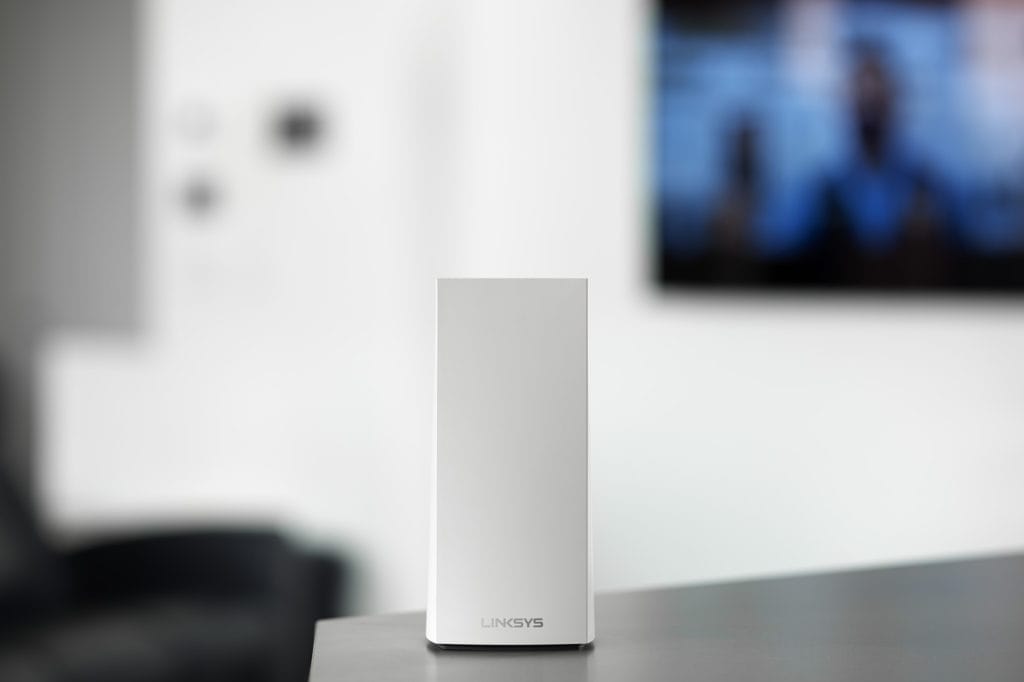1. Invest in a fast broadband connection.
While a good smart home Wi-Fi router is the most important thing, don’t forget your broadband internet connection. Most of the communication between your smart devices occurs on your Wi-Fi network. However, these devices will need to connect to the Internet from time to time to allow you to control them when you’re not at home or upload data, audio, or video to the cloud.
It’s not necessary to go crazy with a super-fast gigabit internet connection from Big Cable, but don’t expect to get by with basic broadband either. Every dozen smart home devices you add to your setup require about 5-10MBps of bandwidth, especially if you’re adding cameras. On slow connections, that could eat up a significant portion of your bandwidth.
2. Choose a mesh Wi-Fi router.
In our experience, your standard Wi-Fi router may not cut it. While in small apartments and homes you may be able to get by with a standard router, larger homes and more complex smart home setups will benefit from mesh networking technology.
Mesh networking limits dead spots since you can strategically place the individual nodes throughout your home to ensure your smart home Wi-Fi works well everywhere. Mesh wifi systems also typically have more network bandwidth, making bottlenecks less frequent, which will result not only in better performance of your smart devices but other devices on your wireless network.
3. Optimize the placement of your router and any nodes.
It’s not enough to purchase a mesh Wifi system: you also need to place your router and/or nodes strategically. Whether it’s a traditional router or a mesh router, you should place your router at a central point within the home. Any nodes (or access points if you’re using them) need to be in the range of the main router, with a solid signal. You can’t “daisy chain” access points or nodes: they all need to connect to the router to work.
Smart home Wi-Fi networks need to be free of dead spots for your devices to work properly. Many mesh networking systems offer functionality within the app that helps you to optimize the placement of nodes. If you’re using a Wi-Fi extender or access point, verify a strong signal using your smartphone or other device connected to the network.

4. Move devices off your Wi-Fi network.
Most of us don’t give much thought to how much we have connected to our wireless networks. We connect everything and anything, from our phones to our gaming consoles and laptops, and desktops. That’s asking for trouble. We recommend moving anything that can connect via Ethernet cable to a wired connection: your smart home Wi-Fi connections will benefit (and so will the devices you connect via cable, they’ll have a faster connection!).
Keep in mind if you’re using mesh networking, the devices that you plug into the nodes will still use the wireless network to communicate with your router. There is a way around this: if you can run Ethernet cable to each node, do it! Devices connected to that node will route traffic through the wired connection (and Wi-Fi devices too). This is yet another way to free up a lot of bandwidth on your wireless network.
5. Reboot your router regularly.
Get in the habit of rebooting your smart home Wi-Fi system regularly. This causes any devices on the network to reconnect and can sometimes help solve bottlenecks and make your entire Wi-Fi network work faster. Some routers allow you to schedule reboots when the wireless network isn’t being used, such as overnight.
If your smart home Wi-Fi system does not support this functionality, you can still do it manually. Refer to your router’s instruction manual for how to do it, and plan to reboot about every 2-4 weeks to ensure optimum performance. A reboot typically will take less than five minutes to complete: you won’t be offline for long.
